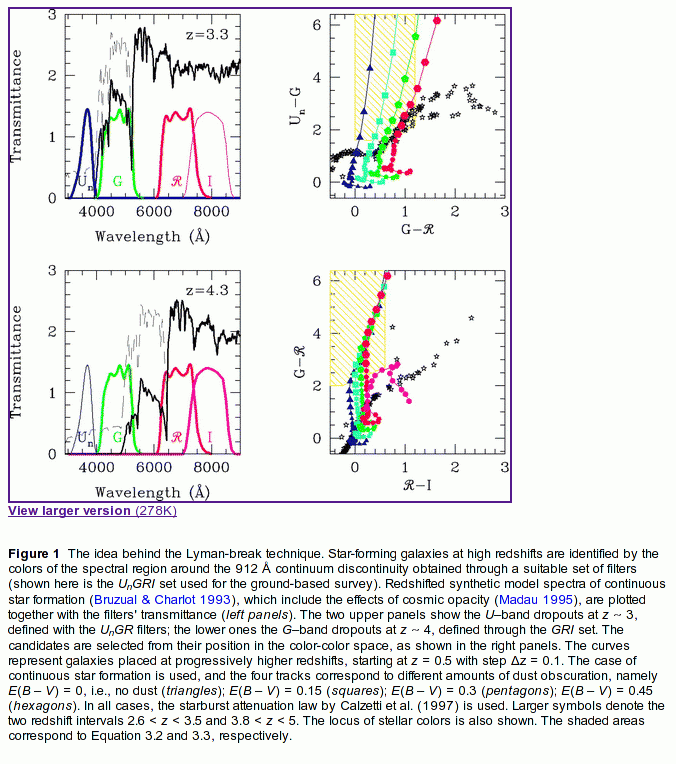The Highest Redshift Galaxies: Lyman Break Technique
The
Lyman Break
A photon emitted with wavelength shorter than 912
Angstroms (Lyman continuum) will be completely absorbed by hydrogen gas
both in a galaxy and along
the line of sight to us. Essentially, there will be no light making it
to us from a galaxy with wavelengths shorter than that. We see a
"break" (the Lyman break) in the spectrum of the galaxy. From 912-1216
A (Lyman alpha), photons can also be absorbed by intervening gas.
For high redshift galaxies, this Lyman break redshifts into the
optical. By looking at the colors of galaxies, we should see high
redshift star forming galaxies as objects that "disappear" in the
bluest filters, or more correctly are red in blue colors (ie U-B) and
blue in red colors (B-V or V-I). We can identify high redshift
candidates this way and do follow-up spectroscopy using big telescopes
to confirm their redshifts.
|
intrinsic
|
z=3.3
|
z=4.3
|
Ly alpha
|
1216 A
|
5228 A
|
6444 A
|
Ly cont
|
912 A
|
3921 A
|
4888 A
|
From Ellis 1998:

From Giavalisco 2002
(Remember: astronomical colors always defined so that bigger numbers mean redder colors)

From Steidel



